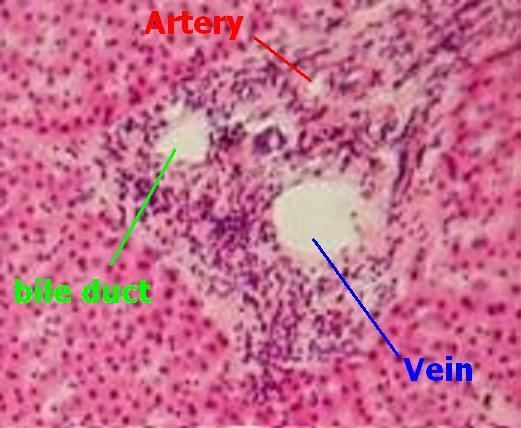Latin trias hepatica FMA 17523 | TH H3.04.05.0.00021 | |
 | ||
A portal triad (also known as portal field, portal area, or portal tract) is a distinctive arrangement in the liver. It is a component of the hepatic lobule. It consists of the following five structures:
The misnomer "portal triad" traditionally has included only the first three structures, and was named before lymphatic vessels were discovered in the structure. It can refer both to the largest branch of each of these vessels running inside the hepatoduodenal ligament, and to the smaller branches of these vessels inside the liver.
In the smaller portal triads, the four vessels lie in a network of connective tissue and are surrounded on all sides by hepatocytes. The ring of hepatocytes abutting the connective tissue of the triad is called the periportal limiting plate.
